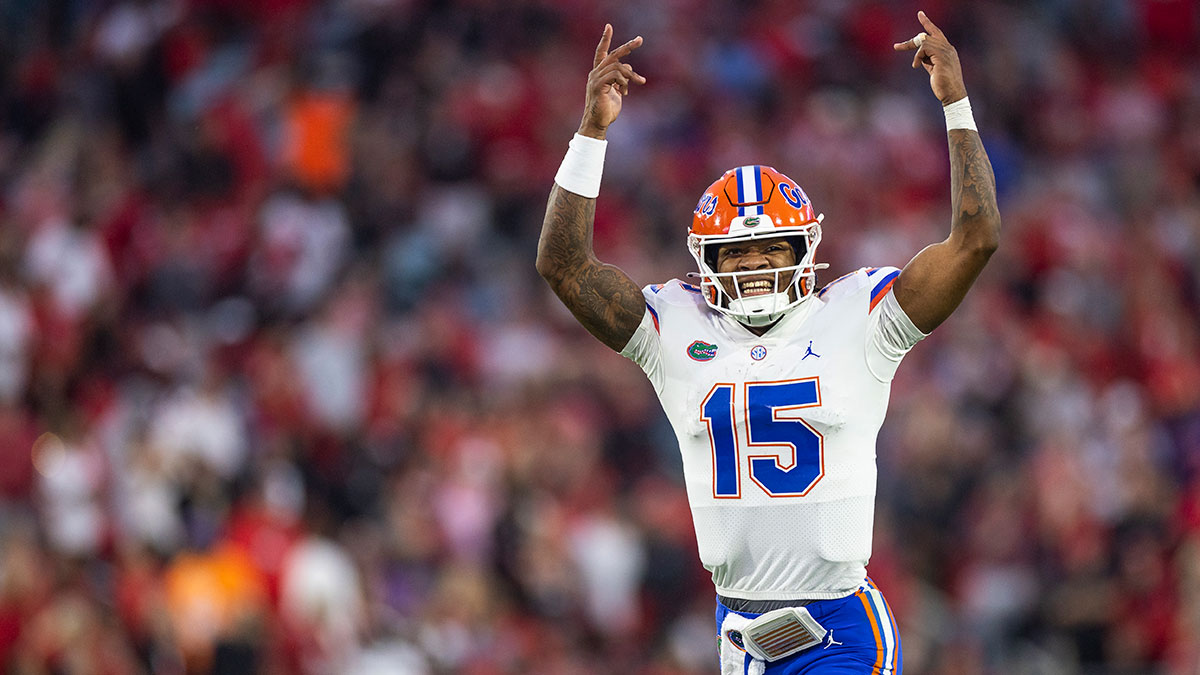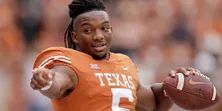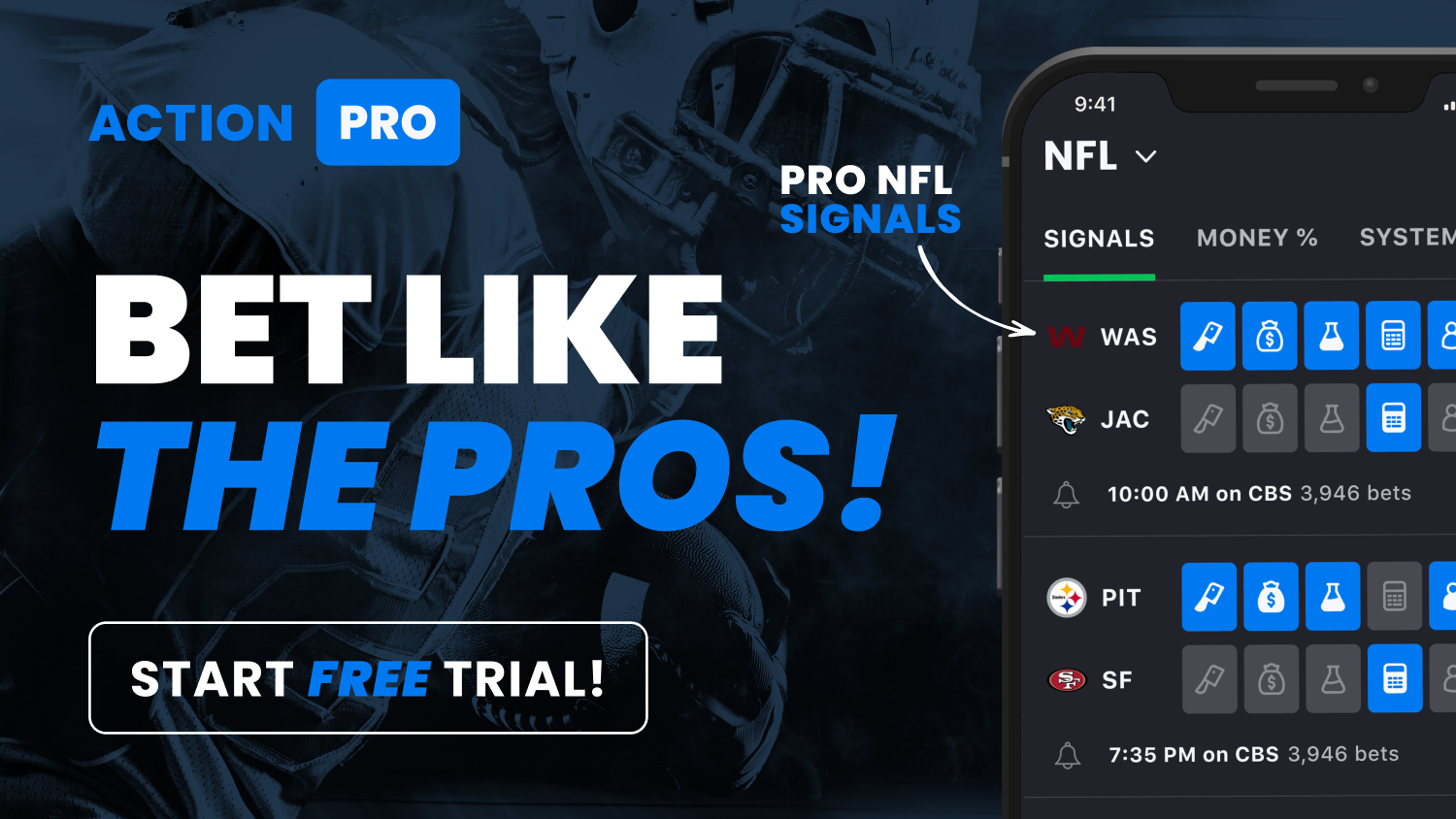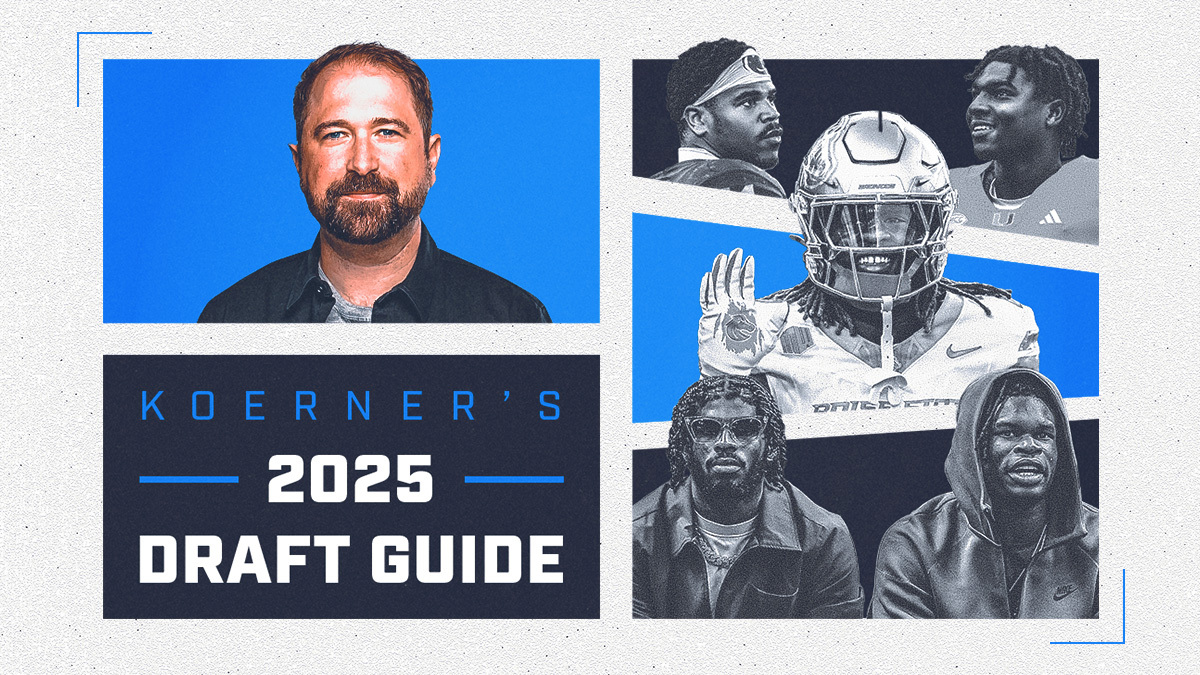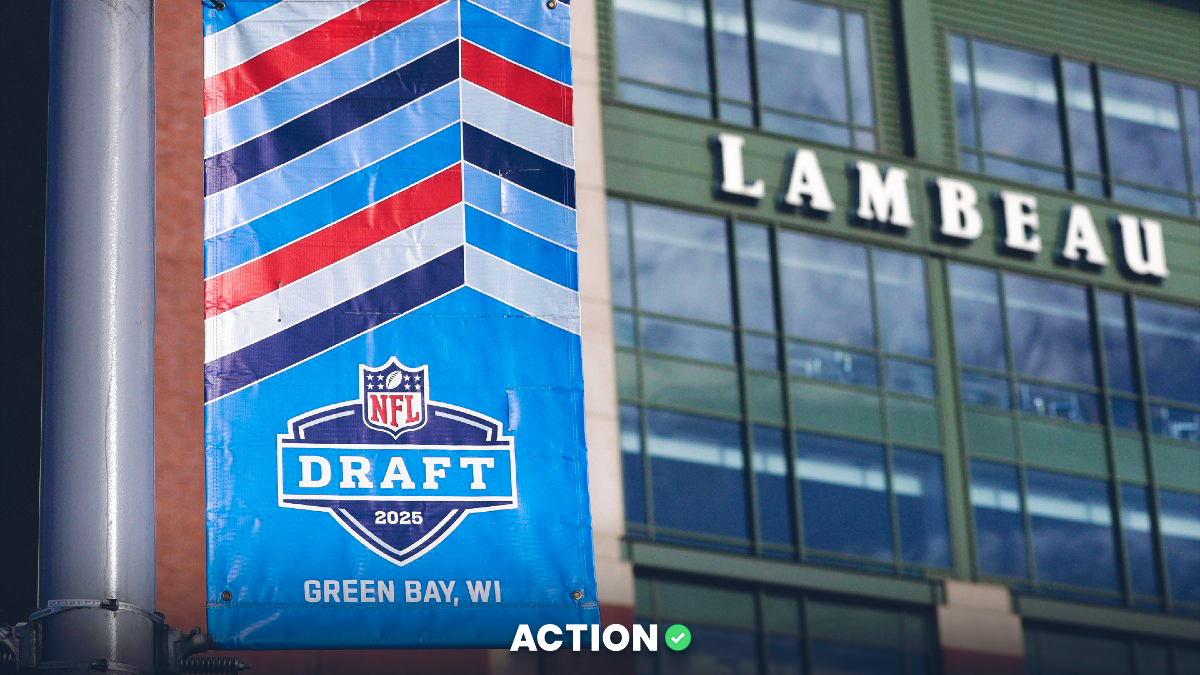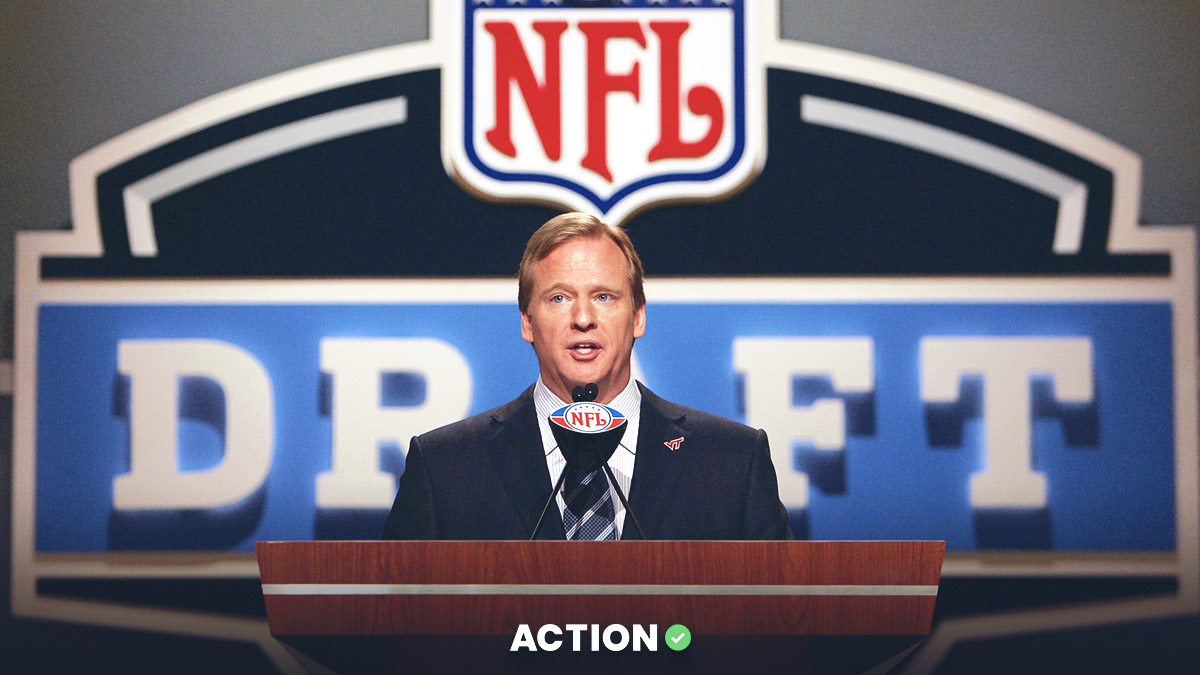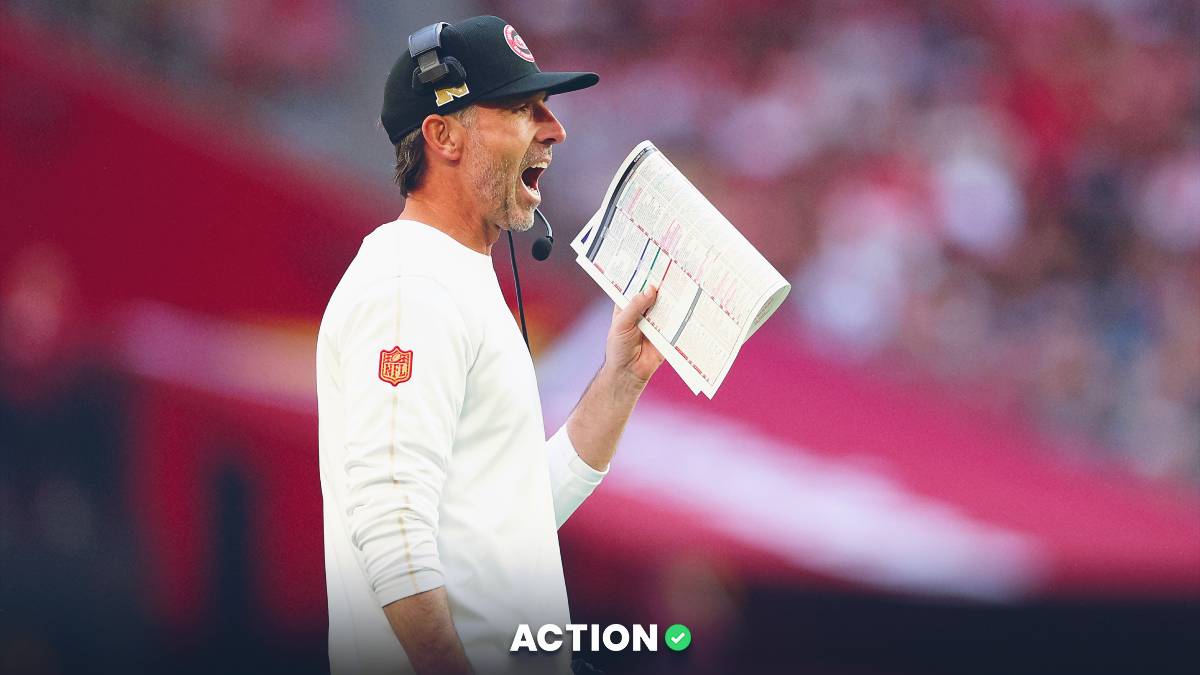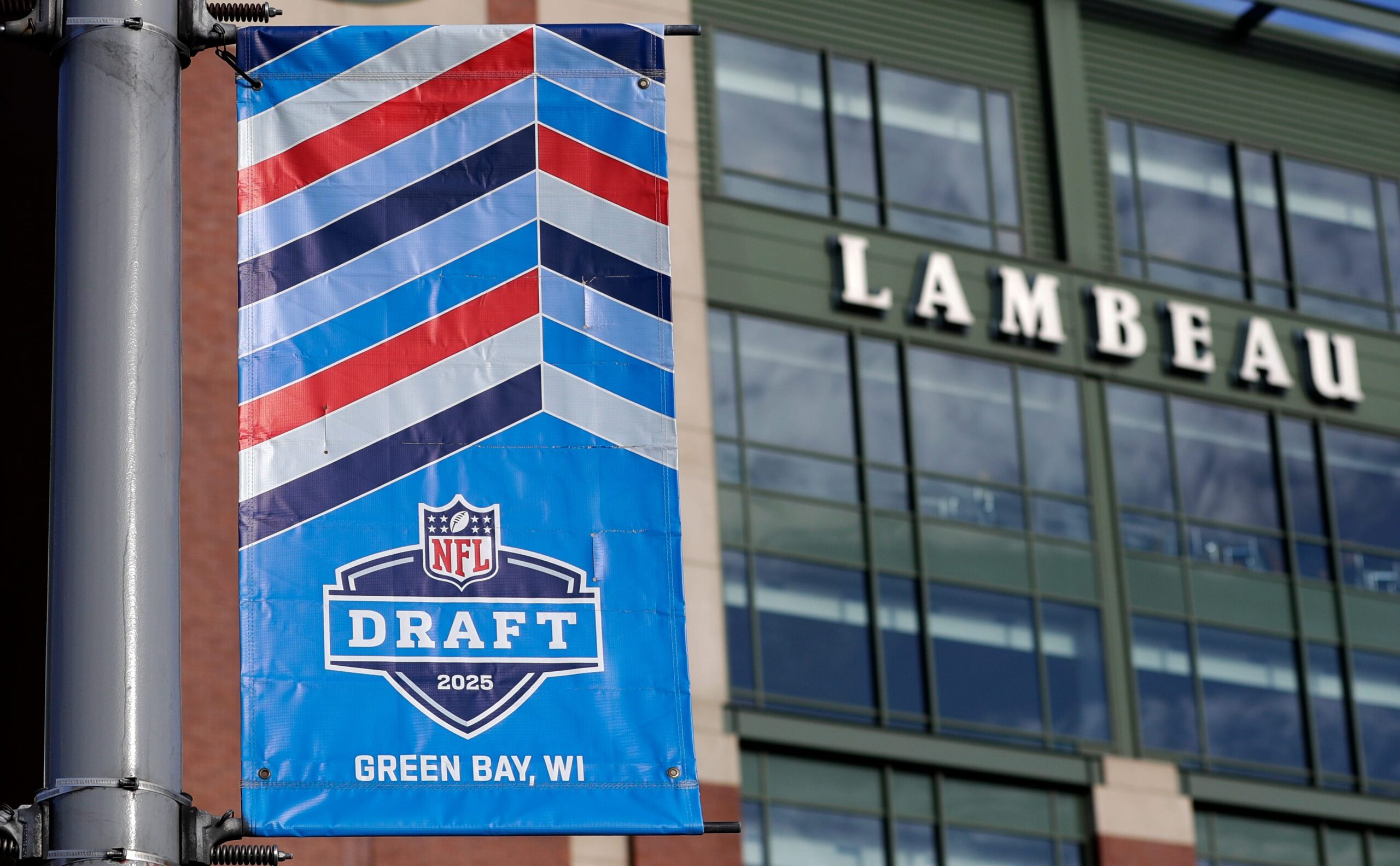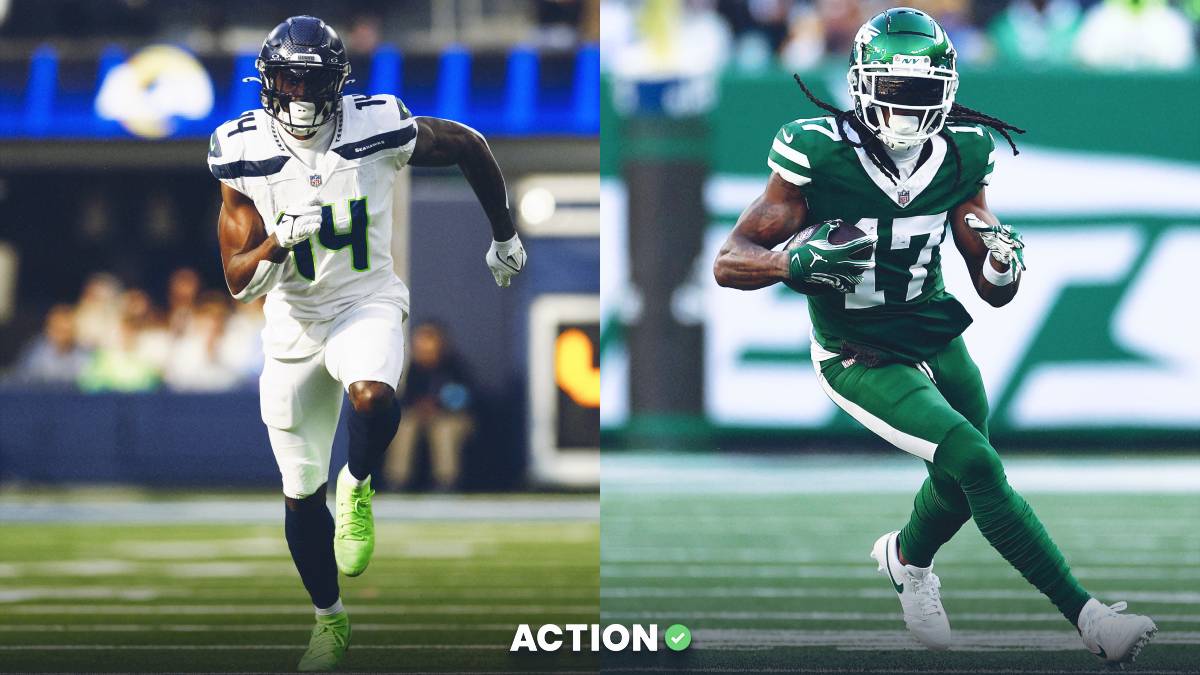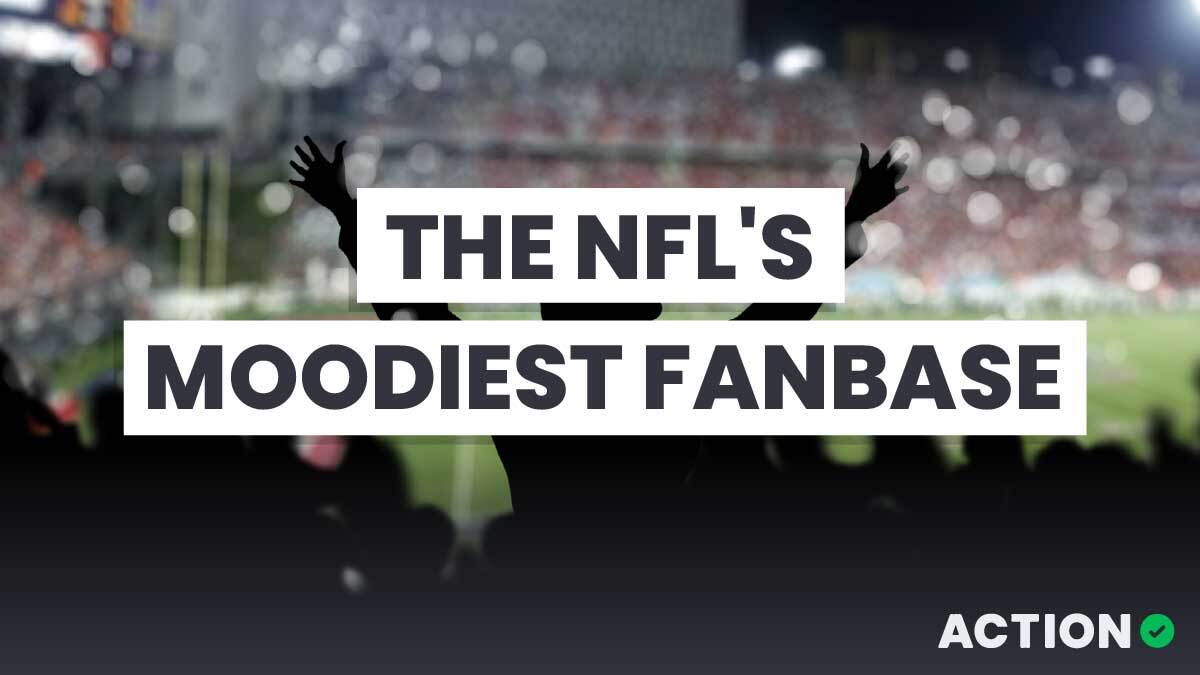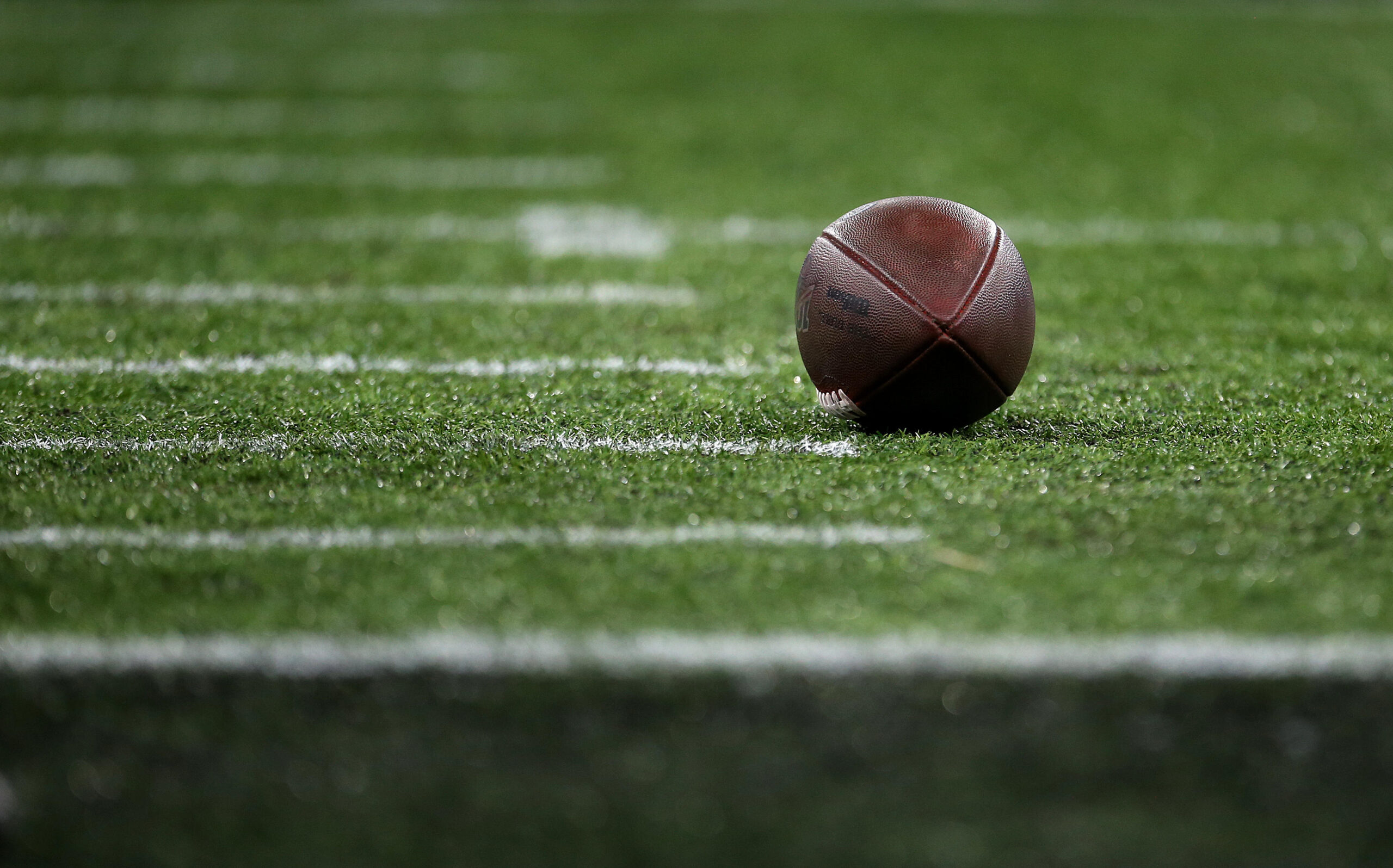It's finally NFL Draft week, and it's a quarterback-heavy draft at the top.
No position in team sports is more important than QB, and any team lacking a franchise signal-caller will be expected to consider one of the names atop the first round of the 2023 NFL Draft.
We could see four quarterbacks among this year's top 10 picks: Bryce Young (Alabama), C.J. Stroud (Ohio State), Will Levis (Kentucky) and Anthony Richardson (Florida).
I'm the quarterbacks guy here at Action Network. Later this week I'll write about how to bet the QB draft props, then how to bet their new teams.
Today, we're starting with a scouting report on each of the top four.
Methodology
Three basic numbers go a long way in telling the story of QB prospects: completion percentage, interception rate and number of starts.
1. Accuracy
An accurate NFL quarterback is a winning QB.
Teams rarely chuck it down field anymore. Quarterbacks threw more than 20 yards down field on 7% or fewer of their attempts each of the past five years. Today's NFL is horizontal as much as vertical, with QBs completing high-percentage short-yardage throws and letting stars make plays.
The short pass is the new run game. Quarterbacks need to make quick reads and get the ball to playmakers quickly and accurately.
Completion percentage doesn't tell the whole story, but it's a good start. Anything over 65% is typically pretty good, while anything under 60% is worrisome.
2. Interception rate
Few quarterbacks can win games on their own, and most these days aren't asked to — but all are required not to lose it.
Interception rates are tiny and often look similar. Anything 1.5% or below is great, while anything north of 2.5% is troublesome. That 1% difference may not seem like much, but over the course of the NFL season, that's a difference of five or six interceptions. It might mean two or three losses.
Mistakes can be even more damaging than good plays are helpful. Fumbles and sacks are bad, too, but interceptions are lethal.
3. Number of starts
More starts means more data, which means we know a lot more. That matters.
It also means more experience — more snaps, more dropbacks, more throws. It means more time learning the most complicated position in sports.
Historically, QBs who started three or four college seasons have consistently been more successful. Only one season as a starter is not a death knell, but it means we know far less — and they probably do, too.
These three metrics helped me identify Lamar Jackson and Jalen Hurts as draft values and warned us of Sam Darnold, Josh Rosen, Jordan Love and Jacob Eason.
Let's get to this year's top QBs.
Bryce Young, Alabama
Completion percentage: 65.8%
Interception rate: 1.3%
Games started: 27
Young checks all three boxes. His accuracy is good, he rarely turns it over and he started two full seasons.
Young ranks seventh in all-time SEC completion percentage. He has a fast release and makes quick decisions, and he showed terrific instincts and leadership. Young has elite stable QB metrics, was outstanding from a clean pocket and great at limiting mistakes. Perhaps best is his playmaking ability, with an uncanny ability to sense the pocket, move under pressure and create on the move.
His accuracy did drop a touch in the biggest three-game stretch of his career against Georgia (twice) and Cincinnati to end his debut season. He finished with a 60% completion rate in those three games and threw a trio of interceptions, losing in the title game.
Young measured at 5-foot-10 and 194 pounds, and that flatters him. Only four QBs under six feet have attempted 125 passes in an NFL season over the last 40 years (Kyler Murray, Russell Wilson, Seneca Wallace, Doug Flutie).
Tyler Huntley was the first QB under 200 pounds to throw 125 passes since Flutie in 2003. You hear a lot of Flutie comps, in part because he's literally the only comparable NFL QB the last four decades. Flutie won more than seven games only once, in part because he never stayed healthy.
The frame is a real concern. Guys like Lamar Jackson and Kyler Murray seem to get hurt every year, and Young already hurt his shoulder this past fall. His size means deeper drops and makes life tougher on the offensive line and scheme.
As great as Russell Wilson was for a decade, he never threw well over the middle, in part because it's just harder for him to see that part of the field. Young's size is limiting.
Young's traits worked in college, but the frame is a serious concern in a league where everyone is bigger, stronger, faster. He's a top-10 pick with high upside and has the ability to make game-winning plays, but his high variance means he's not my No. 1 QB.
C.J. Stroud, Ohio State
Completion percentage: 69.3%
Interception rate: 1.4%
Games started: 25
Stroud's numbers are similar to Young's, but his size is more prototypical and his accuracy is more great than good. Stroud is a super quick processor with a feathery touch and outstanding accuracy, especially into tight windows. His 26.7% rate of perfectly-placed passes leads all FBS QBs since 2021, per PFF.
Stroud's numbers got even better against top competition. In six games against top-10 opponents, he completed 73% of his passes with a 1.2% interception rate. That includes an awesome 384-yard, four-TD finale against Georgia in the playoffs, plus two six-TD games, including a Rose Bowl for the ages with 573/6.
Stroud went 3-3 in those games, but all three losses came with Ohio State allowing at least 42 points. He did his part and was at his best in the biggest moments.
The concern with Stroud is that he played in such an ideal situation, with terrific protection and potentially five first-round receivers. When Stroud could stand in the pocket and deliver, he was elite. But when he faced pressure in the pocket or was forced to create off-script, Stroud's numbers fell off.
He ranked in the 95th percentile or better at PFF on clean pockets and standard drop backs, but 40th or worse outside the pocket, under pressure and avoiding negative plays.
Stroud has a reliable floor, high enough to rank No. 1 on my QB board. His ceiling, though, will depend on the players around him. With the right blocking and weapons, he can be great. But he may top out in that 8th-to-12th-best QB range without threatening the truly elite tier that can win on its own.
Will Levis, Kentucky
Completion percentage: 64.9%
Interception rate: 3.4%
Games started: 25
This is a troubling profile on all three counts.
The interception rate is especially rough, a number that would push Levis toward 20 interceptions a season and among the league "leaders" in mistake throws. And though his 25 games rate similarly, Young and Stroud are 21 while Levis turns 24 in June. He's older with less time for growth and no extra experience to make up for it.
Levis looks the part. He has a rocket arm and a real toughness about him, and he has experience in pro-style offenses. He's also been a nice scrambler and often gets Josh Allen comps, partly because he's a toolsy player with poor college accuracy who needs an Allen-like leap to be good at the next level.
The Kentucky product ranked 101st in the FBS with just 54.4% of his passes deemed accurate this season, per PFF. He ranked bottom-15 percentile on clean pocket and standard dropbacks. Levis has inconsistent mechanics and lacks touch and placement on throws. He was especially poor throwing down field despite his cannon arm, with an interception almost once every eight such passes.
Levis didn't get much help at Kentucky, but that's not the only reason he went 1-3 against top-10 opponents. He was poor in those games at below 59% on completions with an ugly 5.1% interception rate. He also had at least one pick in each, and he had under 100 yards in two of the four and an awful 5.0 YPA.
There aren't enough big plays to make up for that many mistakes. Levis eats a ton of sacks, with 32.1% sacks per pressure this year. His career sack rate of 8.3% meant a sack every 12 dropbacks, an abysmal rate.
Sacks are a QB stat. Good QBs evade pressure to make plays or throw the ball away. Levis isn't doing that, and he's often throwing far too many interceptions.
Levis is the hot name, likely to go top five. The potential is there, but he's not a first-round pick at all for me. Just too many red flags and not enough reason to believe in the upside.
Anthony Richardson, Florida
Completion percentage: 54.7%
Interception rate: 3.8%
Games started: 13
If Levis' profile is troubling, then Richardson's numbers are screaming red flags. He's wildly inaccurate, started only one season and threw a ton of interceptions.
The accuracy numbers are ugly. Richardson ranked bottom-three percentile at PFF on late downs, under pressure, avoiding negatives and outside playaction. His 28.2% uncatchable pass rate was seventh worst in the nation, and he ranked 95th in catchable rate and 106th in on-target rate among 114 qualifying QBs, per SIS.
Those aren't the numbers of a top-10 pick. They're not the numbers of a draft pick at all. So why is a guy with one season of experience and major accuracy and ball-control issues so hyped?
Because sometimes numbers don't tell the whole story.
Richardson has only 13 starts, but he's also only 20 years old. He's young and still learning. He also had three college offensive coordinators, three QB coaches and played through a meniscus injury. Richardson looks raw because he is, with only 448 college dropbacks. He's a project who will make mistakes and take time to develop.
The accuracy issues are real, but SIS notes a few routes that were especially bad, hallmarks of a guy in need of experience and coaching. Richardson ranked ninth in the nation with an aDOT of 11.5 yards, which means deeper throws with a higher degree of difficulty to receivers with poor catch rates.
But while he's not very accurate and lacks inexperience, Richardson's athletic profile looks worth the risk.
10'9" broad jump from Anthony Richardson 🤯
pic.twitter.com/Z0633DQkoN— PFF (@PFF) March 4, 2023
Despite a 6-foot-4 frame and weighing in at the 97th percentile, Richardson ran a 4.43 40 with a 1.53 split. He logged a 41-inch vertical and a 10'9 broad jump. Those four measurements all ranked 99th percentile, literally the best QB ever measured at the Combine. Cam Newton, one of the best athletes ever to play the position, ran a 4.6 with a 35-inch vertical. Richardson is an athletic outlier among outliers.
That athleticism flashed and then some. Richardson ran for 106 yards and three scores in the season opener against Utah. He broke 39 tackles on 97 carries this year and ran for 713 yards. Richardson averaged 12.5 yards per scramble and escapes pressure well, with only 11.1% of his pressures turning into sacks. He's a threat to score on any play, any time.
Richardson blew scouts away at the combine, and the tape is better than the raw numbers. His pocket presence and instincts are quite impressive, and his arm talent matches the elite athletic profile.
He also ranked fourth in the nation at 3.18 seconds to throw — a lightning release could help as the processing catches up to his preternatural abilities.
My three basic metrics helped me identify Lamar Jackson and Jalen Hurts and warned me off a number of busts. But they also warned me away from Josh Allen and Justin Herbert, guys I ranked too low because their physical abilities were masked by inaccuracy and mistakes in college.
My model wouldn't rate Richardson as a top-10 or even top-100 pick, but models require context. In 2023, superstar QBs require elite physical tools. At some point, you have to gamble on a guy with this much upside.
Richardson has huge bust potential but also has the best upside in the class — upside worth a first-round gamble. Sometimes it's worth risking a strikeout to swing for the fences.
Conclusion
I'm not sure any QB in this class will end up top-five in the NFL, so there's no lock at No. 1.
Young and Stroud are the clear top-two QBs. Stroud is the safer play with a higher floor and better accuracy, though he may need more help to be a top-10 guy. Young has the flashier upside and feels like a player who will look like a MVP candidate for four-to-six games a year. But he could struggle with injuries and inconsistency in the other games.
I like but don't love Young's upside, while the downside presents serious risk with a longer tail. I prefer Stroud, but either choice is defensible.
Richardson has higher upside than either of them, but he has huge bust potential. There's enough reason to believe to merit a first-round pick, and in a QB-needy league, that likely means a top-10 pick. He and Levis have similar flaws and downside, but Levis has nowhere near Richardson's upside.
I'll pass on Levis, but it wouldn't surprise me at all if Richardson ends up the best QB in the class.
Top-10 draft picks
1. C.J. Stroud
2. Bryce Young
Clear first-round upside
3. Anthony Richardson
Outside the first round
4. Will Levis


